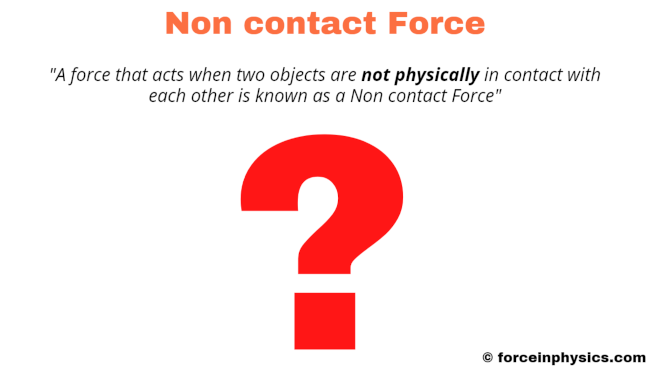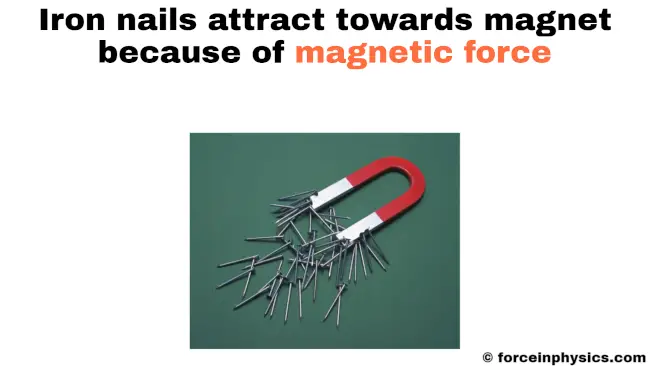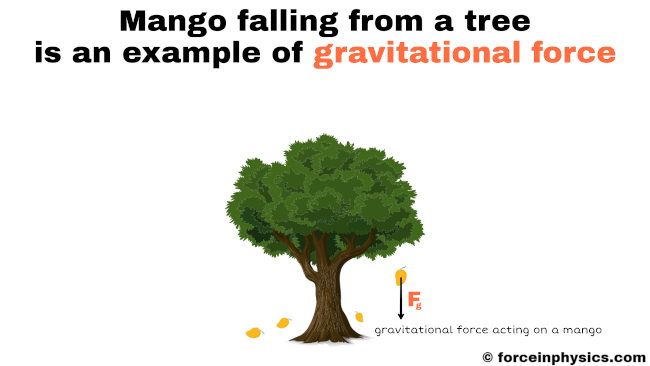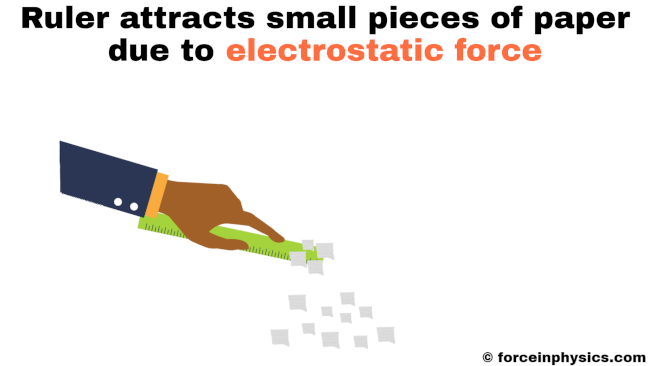
A non-contact force is a force that acts between two objects even when they are not physically in contact with each other. Unlike contact forces that require direct contact between objects, non-contact forces operate without the need for physical contact.
Examples
Rain

As raindrops descend from the sky to the Earth’s surface, they are not in direct physical contact with the ground. This absence of contact highlights the influence of gravity, which acts as an invisible force that attracts objects towards each other, even when they are not nearby. This particular scenario exemplifies a non-contact force, where objects, such as raindrops and the Earth, interact solely through the force of gravity, despite the absence of physical touch.
Types
Magnetic force

When iron nails are placed near a magnet, they exhibit a distinctive behavior – they are drawn towards the magnet. This phenomenon occurs because the iron nails experience an attractive force directed towards the magnet itself. This specific force, responsible for the iron nails’ attraction to the magnet, is called magnetic force. It’s a type of non-contact force, as it operates even when there is no direct physical contact between the magnet and the iron nails. This illustrates the magnetic field’s ability to exert influence over objects within its vicinity.
Gravity

Imagine a ripe mango detaching from a tree and falling toward the ground. What causes this downward motion is gravity. Gravity is the force that attracts the mango downward, drawing it towards the Earth’s center. It is notable that gravity is a non-contact force, as it exerts its influence without the need for physical contact. This natural force is ever-present and governs the motion of objects with mass, consistently acting in the downward direction, as exemplified in the case of the falling mango.
Electrostatic force

When a plastic ruler, charged by being rubbed against hair, is brought close to small pieces of paper, a fascinating interaction occurs. The plastic ruler exhibits an attractive force that draws the small paper pieces towards it. This particular force, which arises without any direct physical contact, is termed an electrostatic force. It’s a type of non-contact force associated with electrically charged objects. In this scenario, the charged ruler’s electrostatic force demonstrates how objects with static electric charges can influence one another even when not in direct contact.
Related
- Balanced force
- Unbalanced force
- Friction
- Tension (physics)
- Applied force
- Normal force
- Drag (physics)
- Gravity
- Centripetal force
- Centrifugal force
- Buoyancy
- Net force
- Compression (physics)
More topics
External links
- Non-contact force – Wikipedia
- Contact & Non Contact Forces: Differences, Examples and more! – Study Mind
- Contact & Non-contact Forces: Definition, Types, & Examples – Science Facts
- contact and non-contact forces – Dynamic Science
- Non-contact forces – IOP Spark
- Does the idea of non-contact force violate the law of logic or mathematics? – Physics Stack Exchange
- Contact and Non-Contact Forces – Shalom Education
- Non-contact forces – BBC
- Lesson summary: What are non-contact forces? – Oak National Academy
- Non-Contact Force – Definition, Types, and Examples – PhysicsGoEasy
- Contact & Non-Contact Forces – Elevise
- Contact Forces: Examples & Definition – Vaia
- What are contact and non-contact forces? – Quora
- Contact or non-contact force Worksheet – K5 Learning
- Contact and Non-Contact Forces – Study Rocket
- Difference Between Contact and Non-contact Forces – Difference Between
- Non-contact Forces – Davis School District
- Contact and Non Contact Forces Flashcards – Quizlet
Deep
Forceinphysics.com was founded by Deep Rana, who is a mechanical engineer by profession and a blogger by passion. He has a good conceptual knowledge on different educational topics and he provides the same on this website. He loves to learn something new everyday and believes that the best utilization of free time is developing a new skill.
